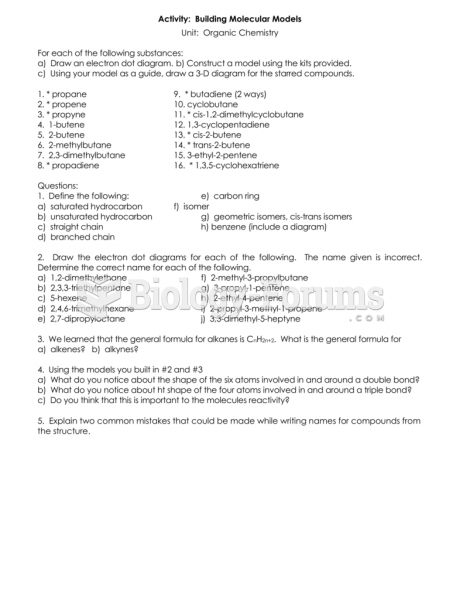After reading the paragraph below, answer the questions that follow.
In 2011, scientists investigated whether the salts that are spread on icy roads to melt the ice are diluted enough by spring rainfall so that they do not have negative effects on amphibian species that breed in nearby areas. They exposed clutches (groups of eggs) of salamanders to three test conditions with varying salt concentrations (road salts mixed with dechlorinated tap water) to simulate salt concentrations of small pools of water located near highways that are typically fed by rain—areas where salamanders often lay their eggs. After 9 days, the scientists placed the three groups in "normal" water and measured how much body mass the salamanders lost every 3 days for 9 days. They chose to measure change in mass because salamanders are able to take in water, which helps lower the chances of salamander embryos dying from freezing, disease, or predation. The table below provides partial results of this study.
| Group | Chloride Concentration in Test Conditions | Total % Mass Lost after 9 Days of Exposure to Test Conditions | Total % Mass Regained after 9 Days in Normal Water Conditions | Additional % Mass Lost after 9 Days in Normal Water Conditions |
| 1 | 145 mg/L | 20% | 15% | 0% |
| 2 | 945 mg/L | 35% | 0% | 10% |
What conclusion did scientists likely draw from this study?
◦ Rainy conditions may not be enough to dilute road salts that have high salt concentrations. Therefore, salamander clutches will experience minimal physiological damage.
◦ Rainy conditions are enough to completely dilute road salts that have high salt concentrations. Therefore, salamander clutches will experience minimal physiological damage.
◦ Rainy conditions are enough to completely dilute road salts that have high salt concentrations. Therefore, salamander clutches will not experience any permanent physiological damage.
◦ Rainy conditions may not be enough to dilute road salts that have high salt concentrations. Therefore, salamander clutches will face permanent physiological damage.







